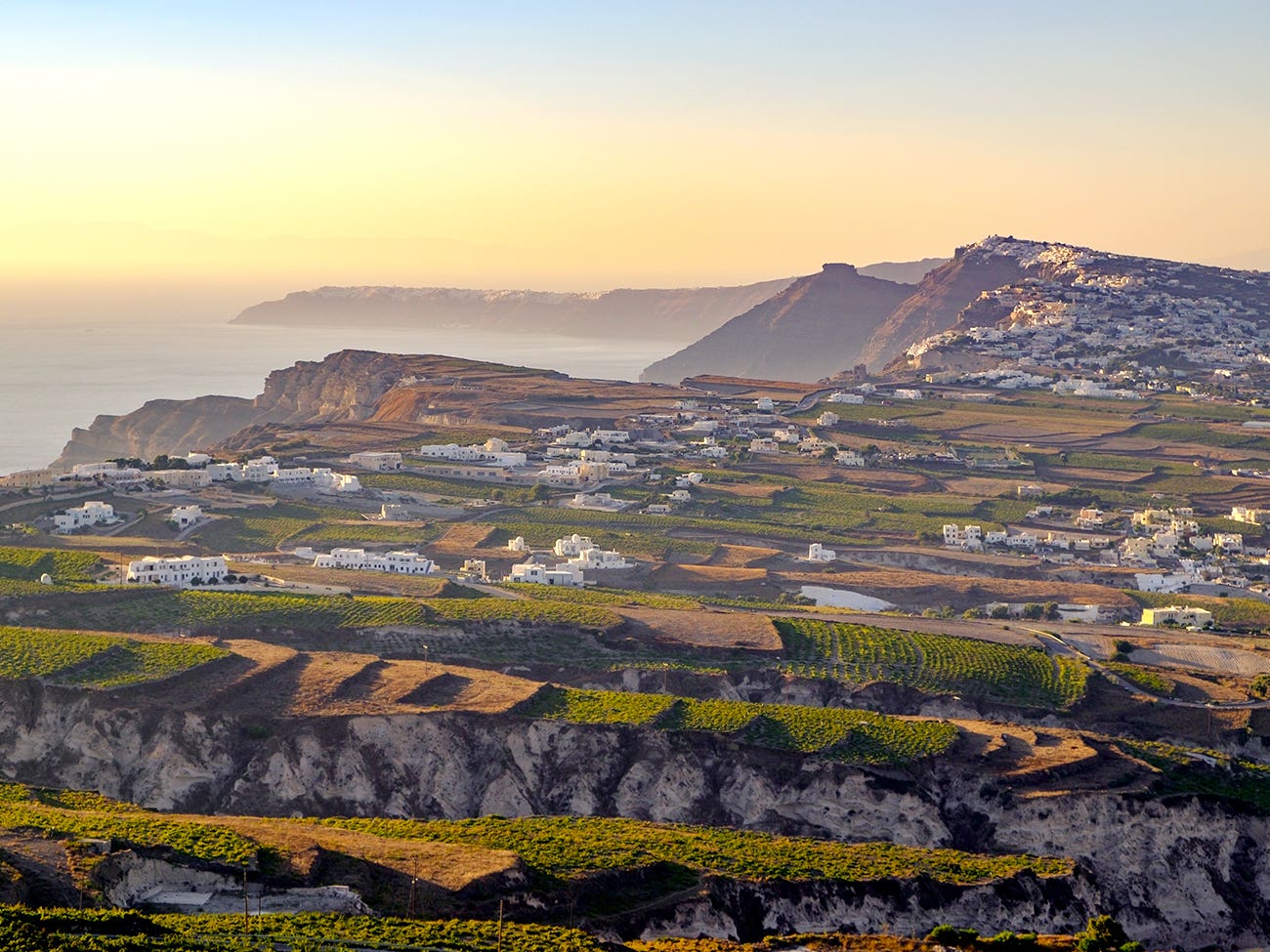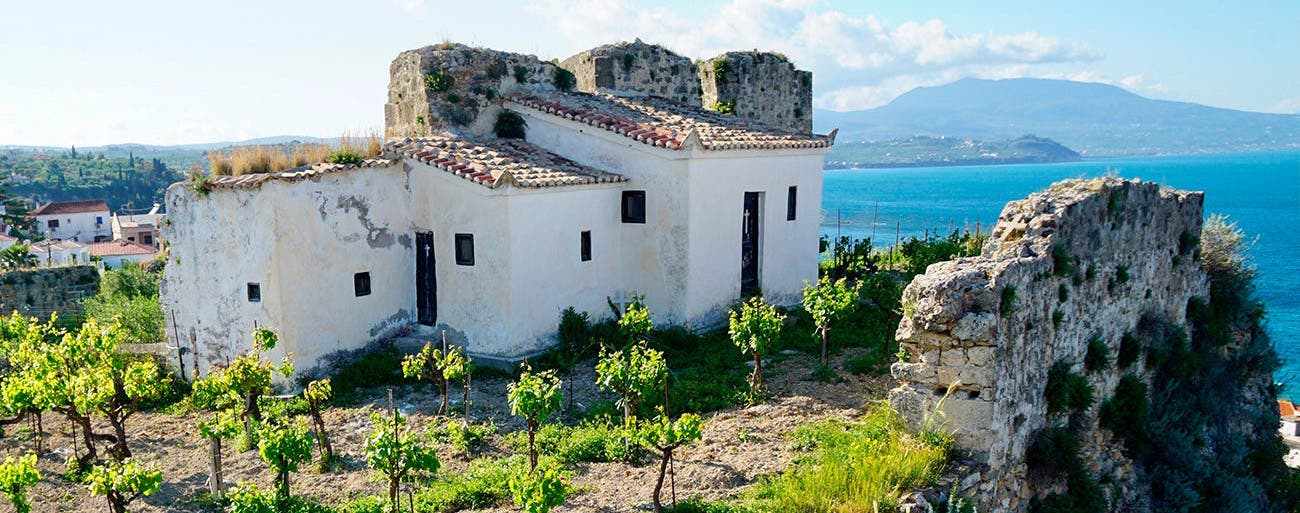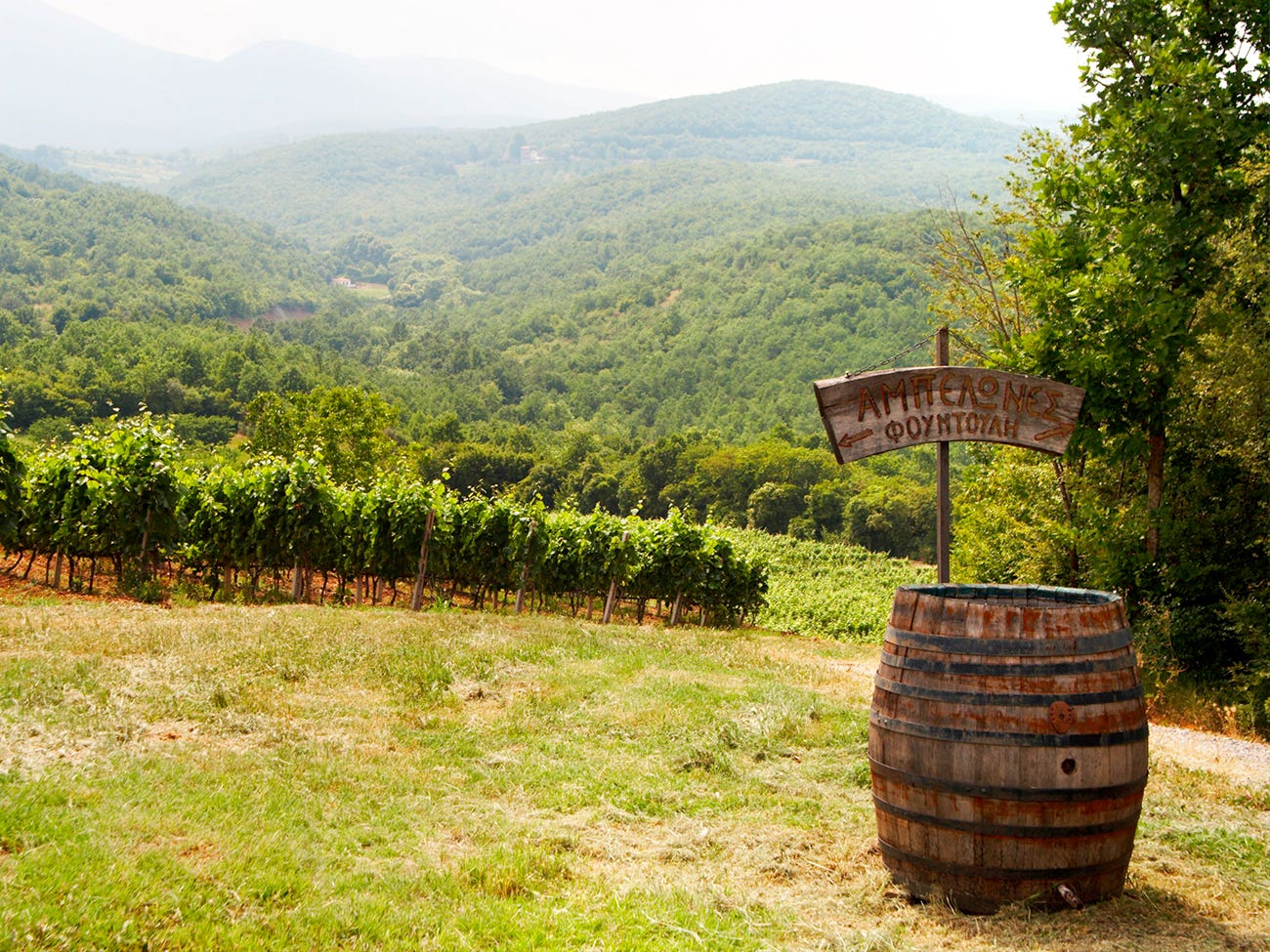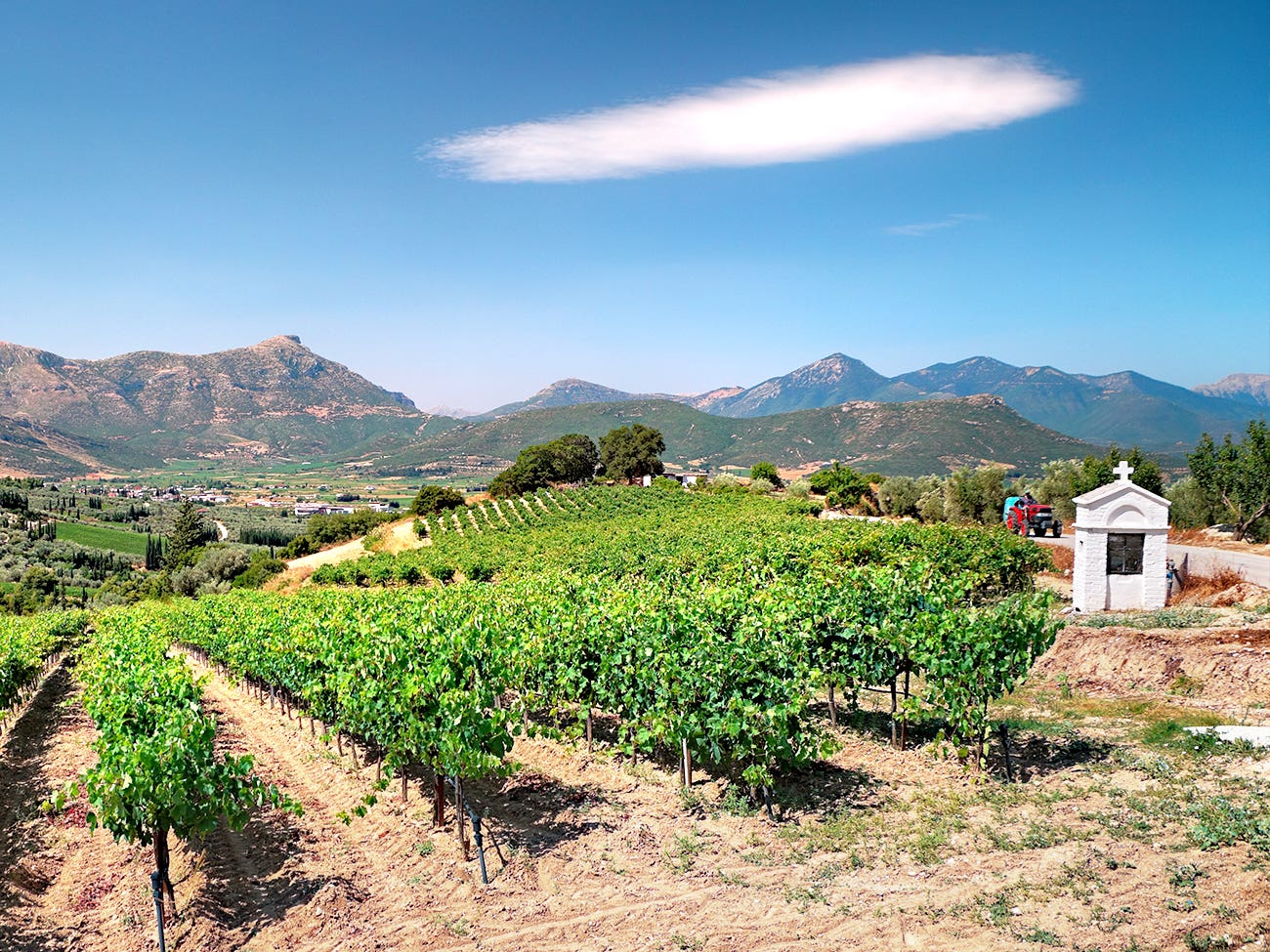But where should you start your journey? There is so much to explore!
Here are several of the main grape varieties, along with their profile and place of culture.
Assyrtiko
If there is one varietal that every wine lover should know, it is certainly Assyrtiko. It grows in a multitude of different regions, but it’s on the volcanic island of Santorini that it reaches exceptional heights.


Santorini, a volcanic island where Assyrtiko is royalty.
Wine has been made in Santorini since at least 1,000 B.C. And if the concept of terroir is defined by a sustainable relationship between the grape, the earth, the climate and the people, then few can rival the Assyrtiko of Santorini. The island is full of old vines, in the real sense of the term. While in many regions, old vines are defined as 50 years or older, in Santorini you can find quite a few vine stocks that are easily older than 200.
On the palate, this varietal is much like a sauvignon blanc in several ways, characterized by its acidity and freshness, although much less aromatic and more mineral… and with a bit more richness as well.


The Roditis and Moschofilero grape varieties grow on the northern coast of the Peloponnesus.
Roditis
Cultivated in Greece, the pink-skinned Roditis grape originally comes from the northern coast of Peloponnesus. It adapts easily to various soils and climates, but its strength is also its weakness, because it can produce significantly higher yields, which can lead to more diluted wines. In any case, when it’s done correctly, this grape can produce marvellously fine and delicate wines. It excels when planted in a place that tempers its maturation, which means high elevation and poor soil.
What should you expect in your glass? The great Roditis wines have floral notes that recall jasmine and subtle flavours that can vary between citrus and white fruits like pear. In terms of its texture, it is characterized by acidity and freshness.
Moschofilero
Moschofilero is another pink-skinned grape, mostly cultivated in the highest altitudes of the Mantineia appellation in northern Peloponnesus. It is much like another varietal of the same colour, the Pinot Gris, but it stands out for its bite and dazzling earthy aromas.
Savatiano
Savatiano is the traditional grape used to produce Retsina, a wine with the flavour of pine resin that is particularly good when made the right way. These days, more and more wine makers are producing Savatiano as a completely white wine.


The clay soils of the plains of Mesogeia, a region of Attica, a territory of choice for the Savatiano grape variety.
This varietal is cultivated in several of Greece’s central regions, but its most favoured location is in the clay soils of the Mesogea plain, in the Attica region. Wine makers in this region have been producing white wine for Athenians for thousands of years: in fact, this was the wine consumed by Plato and Socrates!
In the mouth, Savatiano compares to Viognier, because its aromatic palate often tends toward peach and other stone fruits. The texture can be slightly oily. The acidity is moderate, just enough to preserve its freshness. For those who don’t want a white wine that is too acidic, it’s ideal.
Xinomavro
If Assyrtiko is the star of white wines, Xinomavro is the star of reds. Originally from Macedonia, in the northern part of the country, it attained the heights of its prestige in the cool region of Naoussa.


The Xinomavro grape variety reaches its full potential in the cool region of Naoussa.
If Assyrtiko is the star of white wines, Xinomavro is the star of reds. Originally from Macedonia, in the northern part of the country, it attained the heights of its prestige in the cool region of Naoussa. Upon tasting, it somewhat recalls Nebbiolo, the grape from which Barolos and Barbarescos are made. And much like this grape, Xinomavro offers an elevated level of acidity and substantial tannins. These characteristics can make somewhat difficult young wines, but they become magnificent with age.
Open yourself up to a real taste adventure. Xinomavros contain flavours of red berries, like cherry, but you’ll also find notes of olive, oregano and sun-dried tomato.
Agiorgitiko
Agiorgitiko means “the grape of Saint George”, possible an homage to the chapel of Saint George located in the Nemea region. Agiorgitiko is the second most cultivated red grape in Greece and is the varietal of reference in the Nemea appellation in Peloponnesus. It has a long history, like several Greek grapes. Hercules was said to have drunk it after having defeated the lion of Nemea!


One of the most cultivated red grape varieties, the Agiorgitiko, is produced in the region of Nemea.
Its moderate acidity and relatively discrete tannins explain why it is often aged in new oak, which adds a tannic intensity. As for its style, it could be compared to barrel-aged Barbera—lots of red fruit, mostly prune, but with less acidity. Several wines also leave a final note of spices or herbs.
 Access to SAQ Inspire personalized services and store inventories are unavailable at the moment.
Access to SAQ Inspire personalized services and store inventories are unavailable at the moment. Free in-store delivery with purchases of $75+ in an estimated 3 to 5 business days.
Free in-store delivery with purchases of $75+ in an estimated 3 to 5 business days. 










